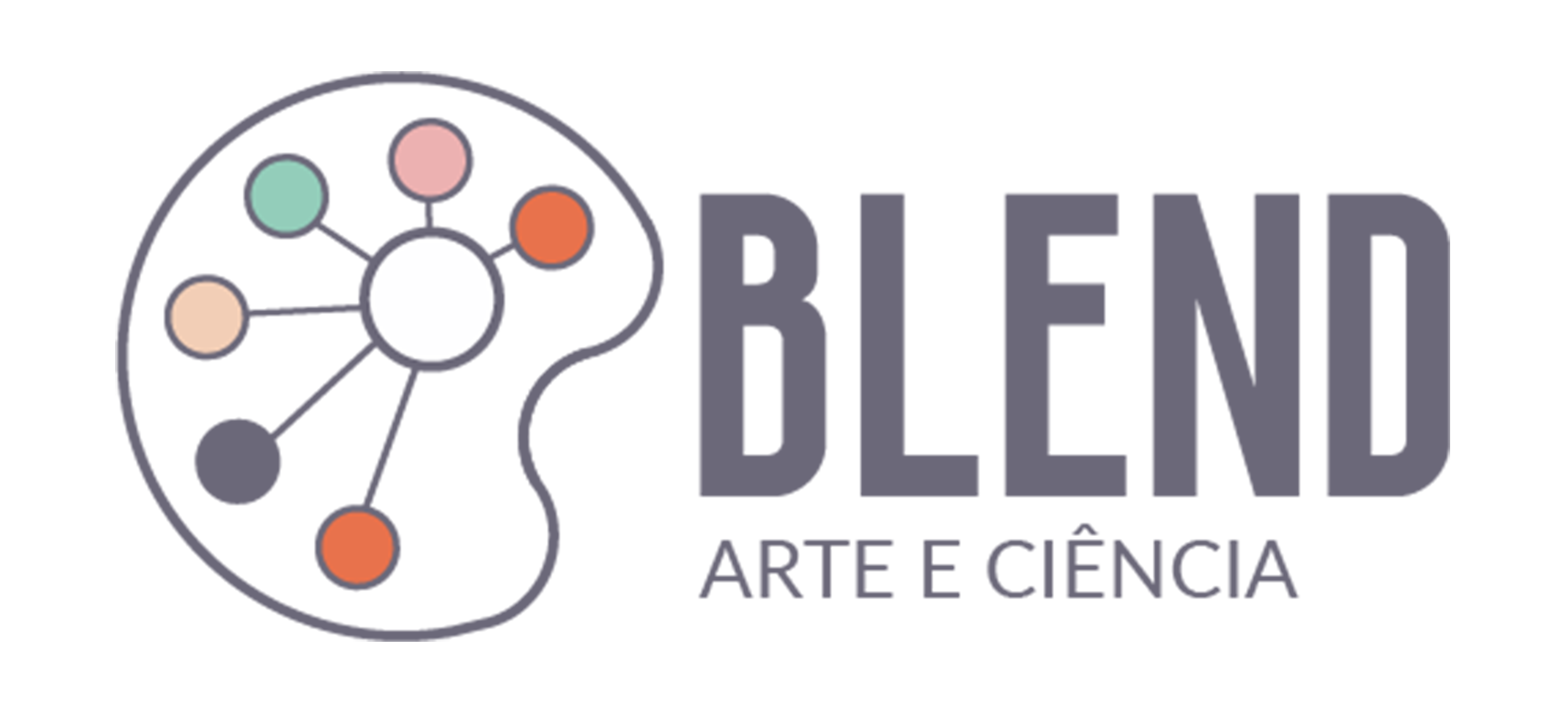Hybrid bodies: Stencil Water Collors
Andrew Carnie
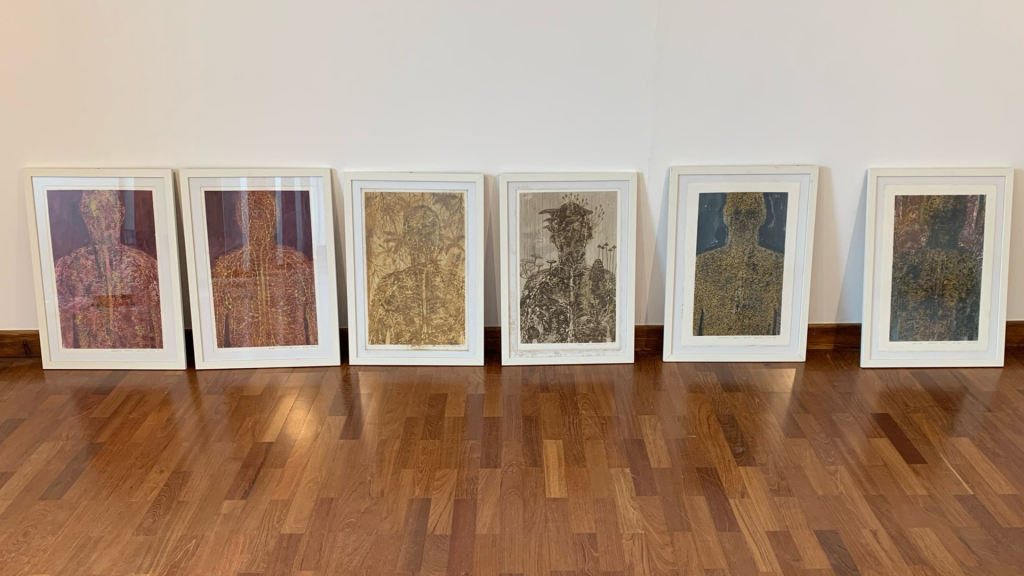
PT//
Hydrid Bodies: Stencil Watercolors Series (Corpos Híbridos: Série de Aguarelas em Estêncil) é um conjunto de trabalhos bidimensionais em papel de aguarela realizados no âmbito do projeto Enlighten Immunology.
O objetivo deste trabalho era definir o corpo humano através do sistema linfático, parte do sistema imunitário, obtendo uma forma genérica que se contrapõe à presença daquilo que o poderia atacar – vírus, bactérias, fungos ou parasitas.
Esta série de aguarelas do sistema linfático, de grande escala, teve início no verão de 2017. Estes trabalhos são resistentes. Resistentes porque o estêncil de cartão do sistema linfático teve de suportar diferentes materiais que comprometem o corpo no Reino Unido: pólen, os esporos de cogumelos bola de terra que representam fungos, e os corpos de mosquitos que representam parasitas.
Outras experiências partiram de um estêncil cortado a lazer, aguarelas e tinta dourada que dá visibilidade ao sistema linfático, homenageando-o de alguma forma, ao enfatizar a complexidade do sistema imunitário, que nos distingue dos outros e a um nível mais básico, nos define como nós mesmos.
O resultado inclui algumas peças de corpo inteiro, criadas sob este intuito, e alguns bustos.
ENG//
Hydrid Bodies: Stencil Watercolors Series is a set of flat art works on watercolour paper made for the Enlighten Immunology project.
The principal behind the work, was to give shape to a generalised human body, by defining through the lymphatic sytem, part of the bodies immune system, set against what might be trying to dismantle the body, be it virus, backteria, fungi or parasite.
This series of large-scale watercolors of the lymphatic system started during the summer of 2017. The works were of a resist type, the resist being the stencil card of the lymph system resisting materials that would compromise the body in the UK: earth ball spores representing fungi, pollen and mosquito’s bodies representing parasites.
Other works used the laser cut stencil, watercolor paint and gold ink to raise the profile of the lymphatic system, honoring it in some way by high-lighting this complex system that defines us form other. At the basest level it is the immune system that defines us as us.
The result was a number of full-sized body pieces to this effect and other upper body works.
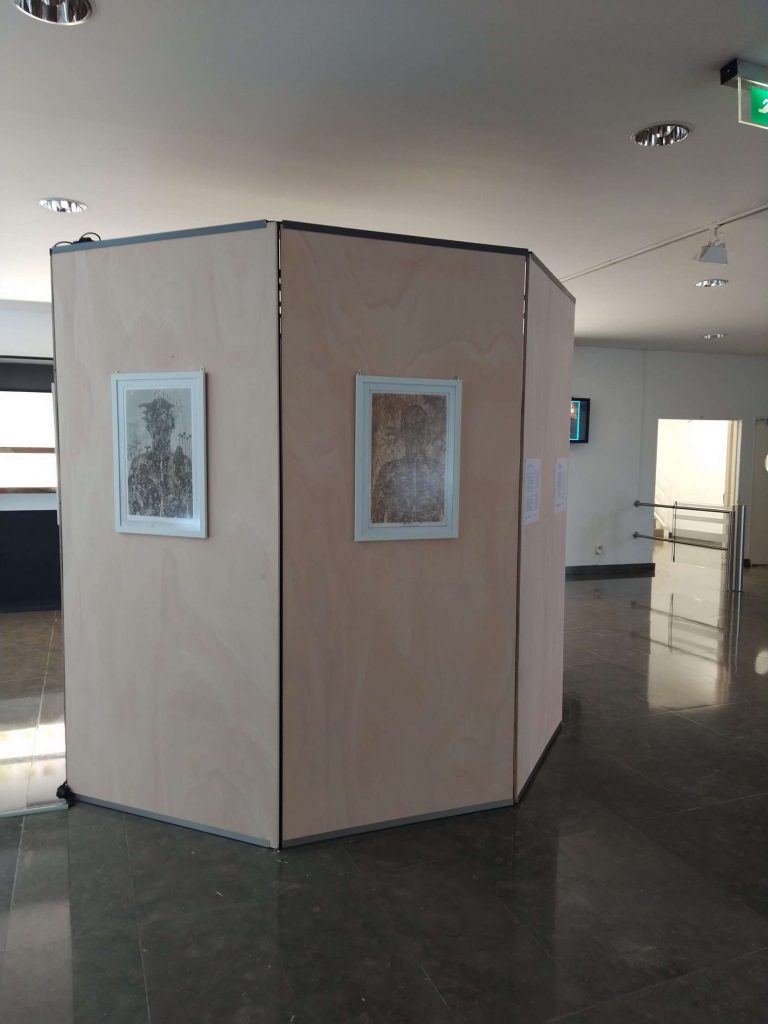
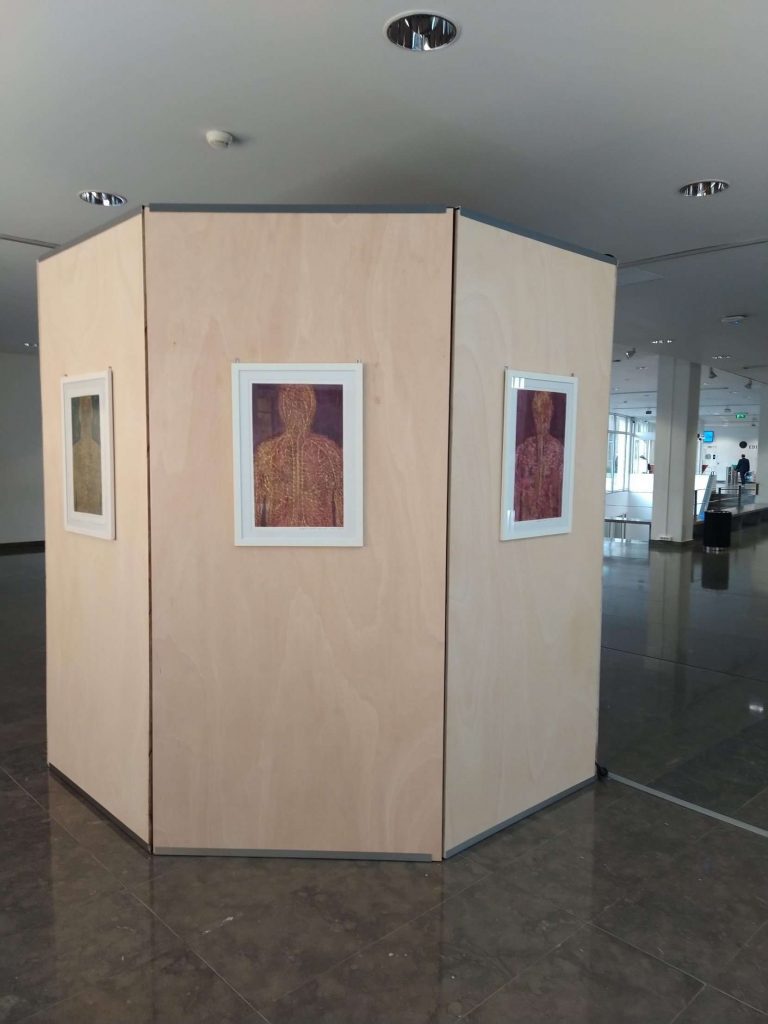
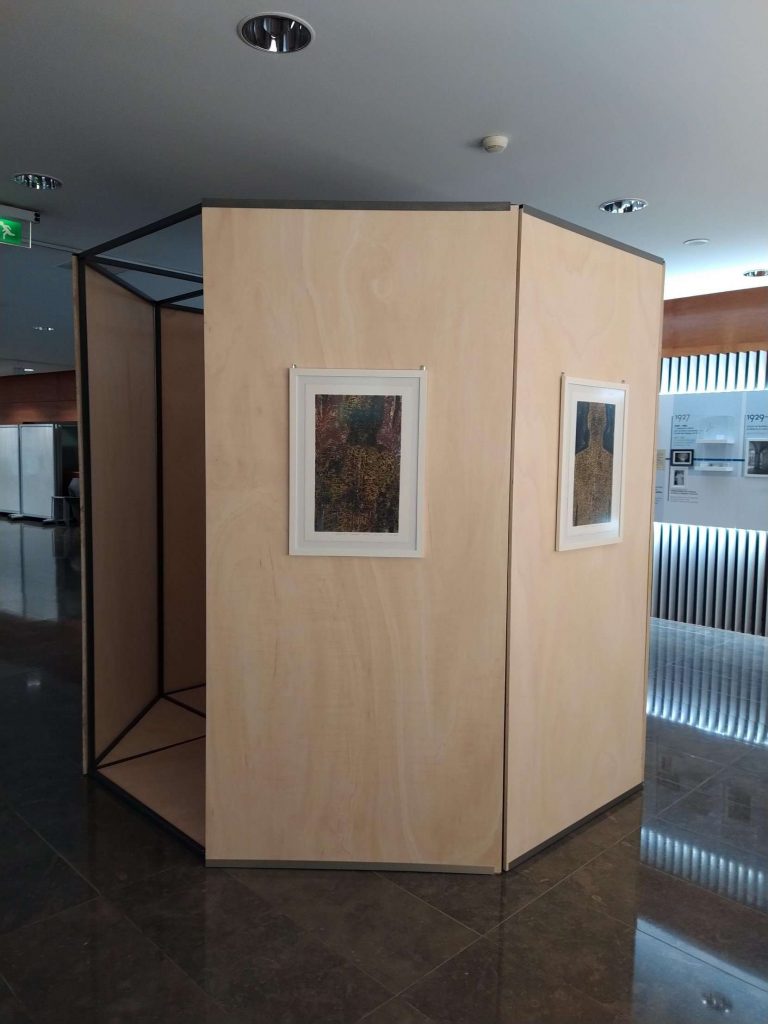
BIO
PT//
Andrew Carnie nasceu em 1957 e vive e trabalha em Winchester e Londres como artista e professor universitário. Estudou Química e Pintura na Warren Wilson College, Carolina do Norte, e depois, Zoologia e Psicologia na Universidade de Durham, antes de concluir a Licenciatura em Belas Artes no Goldsmiths College e Mestrado em Pintura na Royal College of Art, Londres.A sua linguagem artística implica muitas vezes interações com cientistas de diferentes campos, relativas a tópicos e ideias, que costumam estar interligados ao cérebro e à neurologia. A noção de que qualquer pessoa pode aceder e interpretar dados científicos como uma fase inicial do processo criativo é-lhe muito importante. O seu trabalho baseia-se na natureza temporal, podendo envolver projeções de slides que partem de sistemas dissolvidos ou projeções de vídeos em ecrãs complexos. Tem exposto e apresentado a sua obra por todo o mundo. Algumas das suas peças integram diferentes coleções na Inglaterra, Alemanha e América.
ENG//
Andrew Carnie is an artist and academic based in Winchester and London. Carnie Studied chemistry and painting at Warren Wilson College, North Carolina,then zoology and psychology at Durham University, before taking a degree in FineArt at Goldsmiths College, London.He then completed his Masters degree in thePainting School, at the Royal College of Art, London.His artistic practice often involves a meaningful interaction with scientists in different fields, regarding themes and ideas, which are often based around the brain and neurology. The notion that one can access and interpret scientific data as an early stage in the development of work is important to him. The work is often time-based in nature, involving slide projection using dissolve systems or video projection onto complex screen configurations. Andrew’s work has been exhibited and presented worldwide and is represented in different collections–England, German and America.
